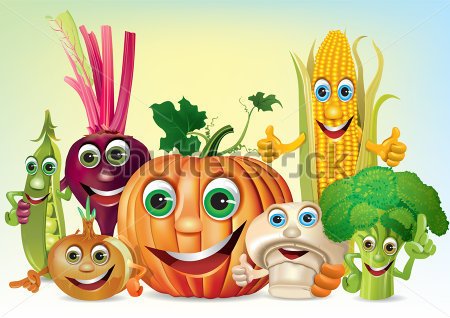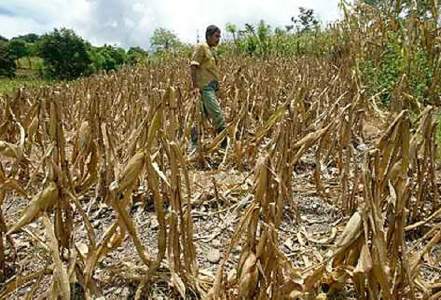
- Do not dispose of poisonous products on earth.
Take care not to throw away solvents and some other products that are not part of the earth in a normal way.
Do not throw solid waste in areas that are not intended for it, such as metal objects, plastic, glass, paper, cardboard and others.
Avoid deforestation of forests.
Nutrient function *
- Nitrogen
What is it for. It gives the plants the green color, because it is the essential component of chlorophyll.
It determines the quality of leaf crops such as spinach and Swiss chard, as well as the size of the fruit.
-How is its deficiency evidenced
In crops that show delays in their development or in leaves that appear yellowish or pale green. * The excess of nitrogen is not suitable because it can lead to exuberant foliage, few fruits and excess pests.
In tomato: the flowers and shoots turn yellow and fall. The fruits that thrive are small.
In corn: the leaves have yellowish strokes. The low leaves are the first to be affected and soon they wither and fall.
In the potato: the younger leaves are bent upwards and the tubers are small.
In cucumbers: the fruits show a pale and pointed color at the far end of the plant.
- Phosphorus
-What is it for
It plays an important role in the development of roots and cellular activity.
-How is its deficiency evidenced
In tomatoes: a very slow growth is seen and the leaves turn dark green and purple on the underside.
In corn: the stems are reduced in circumference and small. The leaves are seen with purple tips and edges.
In the potato: the leaves are bent upwards and the plant shows atrophied. The tubers show dark spots when opened, often radiating from the center. But be careful because this effect is also due to extreme temperatures and the presence of viruses.
- Potassium
-What is it for
Essential element for the growth of plants because it intervenes in various physiological and biochemical processes.
-How is its deficiency evidenced
In tomato: the leaves look dark and piled up. Older ones look yellow and then their edges are brown. The fruits fall very soon after ripening and often have a hard and discolored heart.
In corn: the lower leaves are twisted and darkened. The root system of the plant is poor and the stems so weak that they break.
In potato: the leaves look very dark, with brown edges and die soon.
- Calcium
-What is it for
It is the component of the cell wall in plants, stimulates the development of roots and leaves, and activates the enzymes involved in the metabolism of the plant.

-How is its deficiency evidenced

In tomato: rot of the shoots
Why are soils important?
Soil is a non-renewable natural resource that we need to produce food, fodder, shelter, clothing and energy. The soil also stores and filters water, recycles nutrients, dampens disappears as floods and supports 1/4 of the planet's biodiversity.
1.Bad agricultural practices, deforestation, urbanization, overgrazing and pollution are destroying it. It is a resource that is formed in millennia and we finish it in a very short time. We need our land for the development of our societies. That is why we support World Soil Day, which is December 5th; and the World Year of Soils, declared by FAO in 2015.
- What are the keys to caring for and maintaining it?
Good agricultural practices, use of cover, avoid overgrazing, restore their fertility and preserve the life they live.
- Are the care different in winter and summer?
In tropical countries like Colombia, there are dry and rainy seasons, but since the different seasons are not demarcated (summer, autumn, winter and spring). In dry seasons: the noble cover (weeds), crop residues applied to the soil to conserve moisture. And in rainy seasons, multi-stratified coverings protect the soil from water erosion.
- Are organic fertilizers good?
Yes, because they act as an amendment, as a soil conditioner, and provide small amounts of nutrients. Also, organic fertilizers are used as a food substrate by other soil organisms.
- Where should it be grown and where not?
In different types of soils, but basically to do agriculture you need to have the free movement of water, air and nutrients. Each crop expresses its productivity according to its genetic potential, the climate and the soil where it is located. Therefore, we have crops for cold, temperate and warm weather. Also, for different soils. For this reason it is important that each farmer has a soil analysis.(SOURCE LA PATRIA.COM)
AGRICULTURE RISES
Regards
dont forget to follow me
I invite you to read my post
comment and vote
$$$$$$$$$$$$$$$$$$$$$$$$$$$$$$$$$$ @ledezmajoven $$$$$$$$$$$$$$$$$$$$$$$$$$$$$$$$$$
TRADUCCION ESPAÑOL
- No deseche productos venenosos en la tierra.
Tenga cuidado de no tirar los solventes y otros productos que no son parte de la tierra de manera normal.
No arroje desperdicios sólidos en áreas que no están destinadas, como objetos metálicos, plástico, vidrio, papel, cartón y otros.
Evita la deforestación de los bosques.
Función de nutrientes *
- Nitrógeno
Para qué sirve. Le da a las plantas el color verde, porque es el componente esencial de la clorofila.
Determina la calidad de los cultivos de hojas como la espinaca y la acelga, así como el tamaño de la fruta.
-Cómo se evidencia su deficiencia
Incas que muestran retrasos en su desarrollo o en hojas que parecen amarillentas o de color verde pálido. * El exceso de nitrógeno no es adecuado porque puede provocar follaje exuberante, pocas frutas y exceso de plagas.
En tomate: las flores y los brotes se vuelven amarillos y caen. Los frutos que prosperan son pequeños.
En el maíz: las hojas tienen trazos amarillentos. Las hojas bajas son las primeras afectadas y pronto se marchitan y caen.
En la papa: las hojas más jóvenes se doblan hacia arriba y los tubérculos son pequeños.
En pepinos: los frutos muestran un color pálido y puntiagudo al final de la planta.
- Fósforo
-Para qué sirve
Desempeña un papel importante en el desarrollo de las raíces y la actividad celular.
-Cómo se evidencia su deficiencia
En los tomates: se observa un crecimiento muy lento y las hojas se vuelven verde oscuro y púrpura en la parte inferior.
En maíz: los tallos se reducen en circunferencia y pequeños. Las hojas se ven con puntas y bordes morados.
En la papa: las hojas se doblan hacia arriba y la planta se muestra atrofiada. Los tubérculos muestran manchas oscuras cuando se abren, a menudo irradian desde el centro. Pero tenga cuidado porque este efecto también se debe a las temperaturas extremas y la presencia de virus.
- Potasio
-Para qué sirve
Elemento esencial para el crecimiento de las plantas debido a que interviene en diversos procesos fisiológicos y bioquímicos.
-Cómo se evidencia su deficiencia
En tomate: las hojas se ven oscuras y se amontonan. Los más viejos se ven amarillos y luego sus bordes son marrones. Los frutos caen muy pronto después de la maduración y a menudo tienen un corazón duro y descolorido.
En el maíz: las hojas inferiores están retorcidas y oscurecidas. El sistema de raíces de la planta es pobre y los tallos son débiles y se rompen.
En papa: las hojas se ven muy oscuras, con bordes marrones y mueren pronto.
- Calcio
-Para qué sirve
Es el componente de la pared celular en las plantas, estimula el desarrollo de raíces y hojas, activa las enzimas involucradas en el metabolismo de la planta.
-Cómo se evidencia su deficiencia
En tomate: podredumbre de los brotes
¿Por qué los suelos son importantes?
El suelo es un recurso natural no renovable que necesitamos para producir alimentos, forraje, refugio, ropa y energía. El suelo también almacena y filtra agua, recicla nutrientes, humedece desaparece como inundaciones y soporta 1/4 de la biodiversidad del planeta.
1.Las malas prácticas agrícolas, la deforestación, la urbanización, el sobrepastoreo y la contaminación lo están destruyendo. Es un recurso que se forma en milenios y lo terminamos en muy poco tiempo. Necesitamos nuestra tierra para el desarrollo de nuestras sociedades. Es por eso que apoyamos el Día Mundial del Suelo, que es el 5 de diciembre; y el Año Mundial de los Suelos, declarado por la FAO en 2015.
- ¿Cuáles son las claves para cuidarlo y mantenerlo?
Buenas prácticas agrícolas, uso de cobertura, evitar el sobrepastoreo, restaurar su fertilidad y preservar la vida que viven.
- ¿Son diferentes los cuidados en invierno y verano?
En países tropicales como Colombia, hay estaciones secas y lluviosas, pero dado que las diferentes estaciones del año no están demarcadas (verano, otoño, invierno y primavera). En temporadas secas: la cobertura noble (malas hierbas), residuos de cultivos aplicados al suelo para conservar la humedad. Y en temporadas lluviosas, las coberturas multiestratificadas protegen el suelo de la erosión hídrica.
- ¿Son buenos los fertilizantes orgánicos?
Sí, porque actúan como una enmienda, como un acondicionador del suelo y proporcionan pequeñas cantidades de nutrientes. Además, los fertilizantes orgánicos se utilizan como sustrato alimentario por otros organismos del suelo.
- ¿Dónde debería crecer y dónde no?
En diferentes tipos de suelos, pero básicamente para la agricultura, necesitas tener libre movimiento de agua, aire y nutrientes. Cada cultivo expresa su productividad de acuerdo con su potencial genético, el clima y el suelo donde se encuentra. Por lo tanto, tenemos cultivos para clima frío, templado y cálido. Además, para diferentes suelos. Por esta razón, es importante que cada agricultor tenga un análisis del suelo
Bgus.. Ckup bermamfaat @ledezmajoven
Downvoting a post can decrease pending rewards and make it less visible. Common reasons:
Submit
thanks friend I wish you the best
Downvoting a post can decrease pending rewards and make it less visible. Common reasons:
Submit